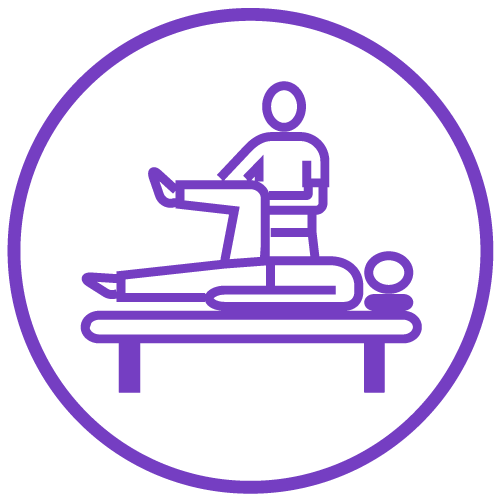If you’re experiencing pain, stiffness, or have sustained an injury either on the sports field or at work or home, then a physio can help put you on the path to recovery. Traditionally, doctors have been the first port of call. However, if the injury involves a period of rehabilitation and exercises tailored to your lifestyle, they’re likely to refer you to a physio in the first instance.
Did you know you can actually see a physio without needing a doctor’s referral?
In Australia, you can see a private physio without the need for a referral. Physios are classed as first contact practitioners, which means they’re qualified to diagnose and treat a wide range of musculoskeletal injuries. They have in-depth knowledge of the body that allows them to accurately pinpoint the problem. Their extensive experience in this area also means that they will know the best method to treat the problem.
What does a physiotherapist do?
A physiotherapist is most often the preferred choice of a practitioner for alleviating pain and restoring function, movement and strength. They may use various forms of manual therapy, such as massage, muscle stretching, and joint mobilisation techniques. They may also employ other forms of therapy such as electrotherapy or acupuncture to facilitate the repair of injuries.
Quite often, the most important aspect of restoring movement and strength is through certain exercises. Physiotherapists are among the leading professions in exercise prescription.
The most common reasons people will visit a physio include sporting injuries and problems with the neck, shoulder or back. But physios can treat a wide range of musculoskeletal issues, some of which include:
- Scoliosis
- Scheuermann’s disease
- Achilles tendinitis
- Arthritis
- Sciatica
- Headaches
- Plantar fasciitis
- Strains and sprains
The key difference between a doctor and a physiotherapist…
A physio will provide you with guidance and details about your injury. Many doctors tend to prescribe pain medication and rest, and often won’t give you a formal diagnosis of the issue.
Many people are reluctant to see a doctor for what they think is a minor issue, such as a stiff neck from working at the computer, or back strain from household chores. But minor aches and pains can lead to more serious issues if not treated early on, so a physio is often the more appropriate choice. They can provide you with specific exercises for strains and sprains, or advice on posture, or hands-on therapy, and so on.
When should you see a doctor?
Physiotherapists are hands-on practitioners, meaning that they mainly employ drug-free techniques. If medication is necessary, they will refer you to a doctor to get a prescription. Physiotherapists can refer directly for certain types of x-rays and scans, but if more extensive scans are needed for whatever reason, they will refer you to a doctor for the appropriate referral.
What if I am not sure whether my problem is something a physio can treat?
Physiotherapists are highly trained in assessing for and recognising conditions that are beyond their scope of practice. This means they will refer you to the appropriate doctor or practitioner if your problem is not something that can be managed by a physio.
The easy solution to save your money.
If you’re experiencing pain, stiffness, or have sustained an injury, head straight to a physio for professional assessment and advice. There’s no need spend money heading to your GP first, just to have them refer you to a physiotherapist anyway. At BodyViva, you can cut out the middleman. We have qualified physiotherapists who are experienced in advanced techniques and can customise a treatment plan to restore you to full health. We work alongside major private healthcare providers so that you can easily make a claim on our services, should they be encompassed in your private health plan. Contact us today to book your next appointment.

















